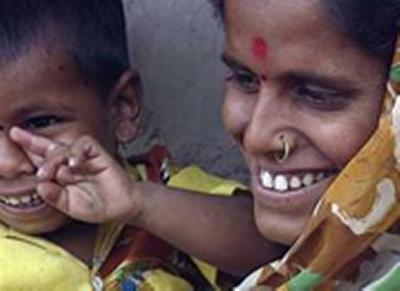Southampton research shows early bone growth linked to bone density in later life

Researchers from the University of Southampton, in collaboration with a research group in Delhi, India, have shown that growth in early childhood can affect bone density in adult life, which could lead to an increased risk of developing bone diseases like Osteoporosis.
The study, led by Professor Caroline Fall of the Medical Research Council (MRC) Lifecourse Epidemiology Unit at the University of Southampton, is part of the University’s ongoing work in assessing the causes of common diseases at different stages of life from before conception through to old age, and the ways in which environmental influences affect gene expression to produce disease.
Over the past 10 years Professor Fall and the Delhi team have been studying the relationship between height and body mass index (BMI) during childhood and adult outcomes, including cardiovascular disease, diabetes and now bone mineral content (BMC) and bone density.
The study, which is published online in Osteoporosis International and was funded by the British Heart Foundation, relates measurements of bone mass and density at the lumbar spine, femoral neck and forearm to birth size and childhood weight and height growth among 565 men and women from the New Delhi Birth Cohort.

The results showed that size at birth and height growth during early childhood contribute significantly to adult bone mass, while BMI in later childhood was positively related to adult bone density. These findings suggest that nutrition in childhood is an important determinant of adult bone health and in the prevention of developing bone disease like Osteoporosis.
Osteoporosis causes some of the struts within the bone to become thin making it more fragile and prone to break even after a minor bump or fall. Half of women and one in five men over the age of 50 will break a bone mainly because of Osteoporosis.
Professor Fall says: “The risk of osteoporotic fracture depends on two factors: the mechanical strength of bone and the forces applied to it. We know that bone mass is an established determinant of bone strength and adult bone mass depends upon the peak attained during skeletal growth and the subsequent rate of bone loss. Peak bone mass is partly inherited, but environmental and lifestyle factors do play a part too. If we can improve childhood nutrition and that of the mother while pregnant, the risk of bone disease in later life can be reduced.”
Professor Cyrus Cooper, Director of the MRC Lifecourse Epidemiology Unit at the University of Southampton, adds: “This study emphasises the huge benefits of studying cohorts in both developed and developing populations, which permit the opportunity to explore the early origins of common chronic disorders such as osteoporosis.”